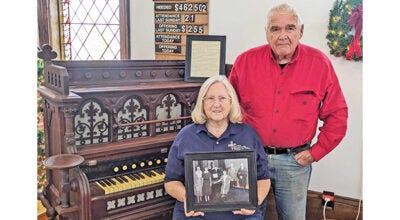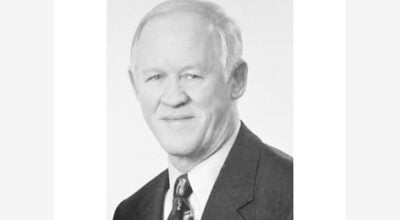Young artist finds her place in SW Michigan
Published 8:30 pm Thursday, May 5, 2011
- River Valley and Edwardsburg captured the Lakeland Conference cross country titles Monday night at the league meet at River Valley High School in Three Oaks.
I had the pleasure of meeting the very classy Rebecca Hunt about a year ago when she contacted me about taking a printmaking class. I was so impressed by the maturity and talent of this young woman that I asked to do an article about her for Off the Water. “Becca,” as she is called, sees herself as a sculptor who is currently doing printmaking — Hunt is also an accomplished watercolor artist.
“I was actually a musician first,” Hunt told me. “I come from a musical family; I play piano and clarinet.” Surprisingly, Hunt is the first visual artist in the family.
Born in Ovide, her family later moved to Hartford, Mich., where her father was a pastor. Hunt attended Southwestern Michigan College for two years to study art and philosophy, then transferred to Indiana Wesleyan University, where she graduated with a degree in art and a minor in philosophy and religion. She believes that there she learned to think. An eye-opening experience was learning the difference between being a religion major and a Christian ministries major: A religion major asks questions and is more interested in the philosophy of the religious experience, whereas the Christian ministries major assumes that the student needs to only learn how to minister the established doctrine. Because her faith is very important to her, Hunt enjoyed questioning and learning the philosophies behind organized religion, particularly learning how to academically approach the Bible. After taking an introductory sculpture class she knew she wanted to study sculpture in more depth. She worked on a hay farm after graduating, did some substitute teaching and taught art at the Michigan Avenue Academy alternative school in Paw Paw, Mich.
After taking sculpture at the Kalamazoo Institute of Art, someone referred her to the Lyme Academy College of Fine Arts on the East Coast. Hunt became a major there in figurative sculpture in the bachelor of fine arts program. Questions about who she was and what she was doing would finally be answered. Filled with hope, wonder and gratitude for being accepted, Hunt told me: “It was a huge privilege to be a student again after three years of being in the work force. It was risky and scary and wonderful to learn how to ask those questions.”
There, Hunt “worked and worked and worked seven days a week based on classical principles, and lived with 90 to 100 other art students. Students at Lyme started with highly sequential observational learning and foundational classes, and were assured that if they kept working they would improve.”
Belief in deep practice in the classical style of learning was stressed. Frustrated and filled with self-doubt, and not sure she was progressing or learning what she was supposed to be learning, Hunt began to feel that she was not in the right place. She could see the work of students around her improving by leaps and bounds — and yet others were also stressed, unhappy and filled with anxiety.
Having left Lyme with a pocket full of student loans, and still on the East Coast, Hunt took a job for a year as a behavioral specialist and later as a summer maritime camp program coordinator, hoping to recover from the stress under which she’d been living. One day Hunt saw a job ad for the Krasl Art Center in St. Joseph.
“Here I was, thinking of returning to Michigan — I couldn’t believe it,” she said.
When I worked with Hunt doing printmaking, I noticed that her drawings were some of the most emotionally-charged and full of strength that I have ever seen from such a young artist. She turned these drawings into linocuts of equal strength. Hunt’s prints are created with the same drive and self-assurance that her drawings show — hard to believe that she ever experienced self-doubt.
Hunt believes that she has discovered her “style” of drawing and is happy with her progress in that area. She believes that her sculptural “style” has eluded her for some time, but says, “I think I’m close.” Artist Myron Barnstone, of Barnstone Studios in Pennsylvania and Alaska, is an inspiration to her. Hunt is also inspired by books like “The Talent Code” by Daniel Coyle.
I asked Hunt what she wants to do now and what she hopes to accomplish by the time she is 50. Taking some time to decide what she wants to do with her life is high on her agenda.
“I know I want to work and teach,” she said. “At 50? I want to be debt-free, working as an artist and making a living.”
You can get in touch with Kathee Kiesselbach at katheek@comcast.net. She loves to hear from people about her column.






